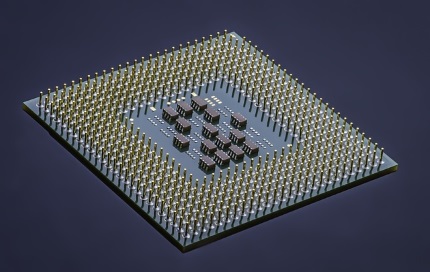The current state of the global semiconductor industry can be described by the famous opening words of Charles Dickens’s A Tale of Two Cities: “It was the best of times, it was the worst of times…”
The global chip supply crunch triggered by the pandemic is likely to be drag on for the next two years, according to Ajit Manocha, president and CEO of SEMI, a global association of companies and professionals in electronics design and manufacturing. Manocha says chipmakers are struggling to find replacements for raw materials normally purchased from Ukraine, primarily highly purified rare gases such as neon, helium, and krypton.

At an industry conference in Malaysia, Manocha said the disruption from the fighting will continue to hinder supplies, even as demand surges. As such, the worldwide supply chain crunch is not expected to recover until 2024. “We have seen an average lead time for equipment manufacturers increasing from three to four months to 10 to 12 months,” he added.
Manocha also said there are 92 new fabrication plants coming online worldwide in the next few years to meet the surging demand for semiconductors…but until they are up and running, the situation likely won’t improve.
That is a huge plus for the semiconductor companies that do have fabrication plants up and running. That’s where the “best of times” come in.
However, the “worst of times” reality is that it is at least 20-30% more expensive to build a new semiconductor plant than it had been just a year or two ago, due to the fact that the crucial materials used in making semiconductors are soaring in price.
Chipmaking Materials Prices Soar
Shortages and constraints are now becoming commonplace in the most obscure corners of the supply chain, pushing up prices of vital chemicals and materials, the availability of which the industry once took for granted and the prices of which had always been stable.
Semiconductor manufacturing involves hundreds of carefully formulated, highly purified chemicals, gases, and materials. Together, they account for about 20% of total chip manufacturing costs, according to industry executives estimates gathered by the Nikkei Asia.
Photoresist, phosphoric acid, wafers and noble gases like neon are just a few examples of materials whose prices have surged since mid-2020—some more than doubling—according to Nikkei Asia’s analysis and interviews with more than 10 industry executives and analysts.
For example, photoresist (used in lithography) is up an average of 20%, and 100% in certain cases. Phosphoric acid is up about 100%, and neon gas is up more than 100%—even 200% to 300% in some instances.
In addition, the price of some high-purity metals vital for chipmaking are also rising. Many of these are used not only in chip production and chipmaking equipment themselves but are also mixed with chemicals to create formulas used in the chipmaking process.
Some examples of the increases since mid-2020 include:
- Copper—up more than 70%
- Aluminum—up more than 75%
- Nickel—up about 130%.
The key problem lies in chipmakers’ extremely demanding specifications for chemicals and gases. That means finding alternative suppliers is no simple task. Only a handful of suppliers can churn out the chemicals needed at sufficient scale to meet their needs.
Logistics woes are also contributing to the price surges. Unless they the chemicals are locally produced, they have to be stored in specially designed containers known as ISO tanks and shipped via cargo vessels.
And with the global freight industry still a mess, not only have the shipping costs gone up, but the waiting time for shipments has also grown from around a month to at least three months.
What This Means for Chipmakers
All this is bad news for the bottom line at many semiconductor companies. Global chipmakers have enjoyed healthy profit margins, but a squeeze on margins looms.
However, the dual impact of material shortages and soaring prices is falling most heavily on the smaller chip firms.
Lita Shon-Roy, president and CEO of Techcet, an advisory service firm focused on process materials supply-chains, told the Nikkei Asia that top chip manufacturers such as Intel, Taiwan Semiconductor, and Samsung Electronics normally have long-term agreements with their materials suppliers. That means they will not feel the impact of surging prices immediately.
“You will hear less [about] supply chain problems from big chipmakers. They are like Walmart. They have huge buying power and greater control of their supply chain,” Shon-Roy said.
In other words, the chemicals suppliers will make sure deliveries are made to the likes of Taiwan Semiconductor ahead of the little guys.
Plus, the large companies have the ability to pass on their rising costs to their customers.
Taiwan Semiconductor
The world’s largest contract chipmaker—and my top semiconductor investment recommendation—Taiwan Semiconductor (TSM) warned clients in May that it plans to raise prices for the second time in less than a year. It cited looming inflation concerns, rising costs, and its own massive expansion plans to help alleviate a global supply crunch.
This planned price hike, effective at the start of 2023, is likely to be in the range of 5% to 8%. Last August, the company told its clients it would increase prices up to 20%—its biggest price hike in a decade.
After Taiwan Semiconductor presented at its annual Technology Symposium event recently, I remain supremely confident about the company’s technology leadership and its execution of cutting-edge chip manufacturing.
This will translate into strong pricing power that can more than offset the inflationary pressures the industry is facing. That makes TSM a buy.
It’s a good stock to accumulate, as all technology stocks continue to sell off. Any price in the 80s is a reasonable place to add more shares.





